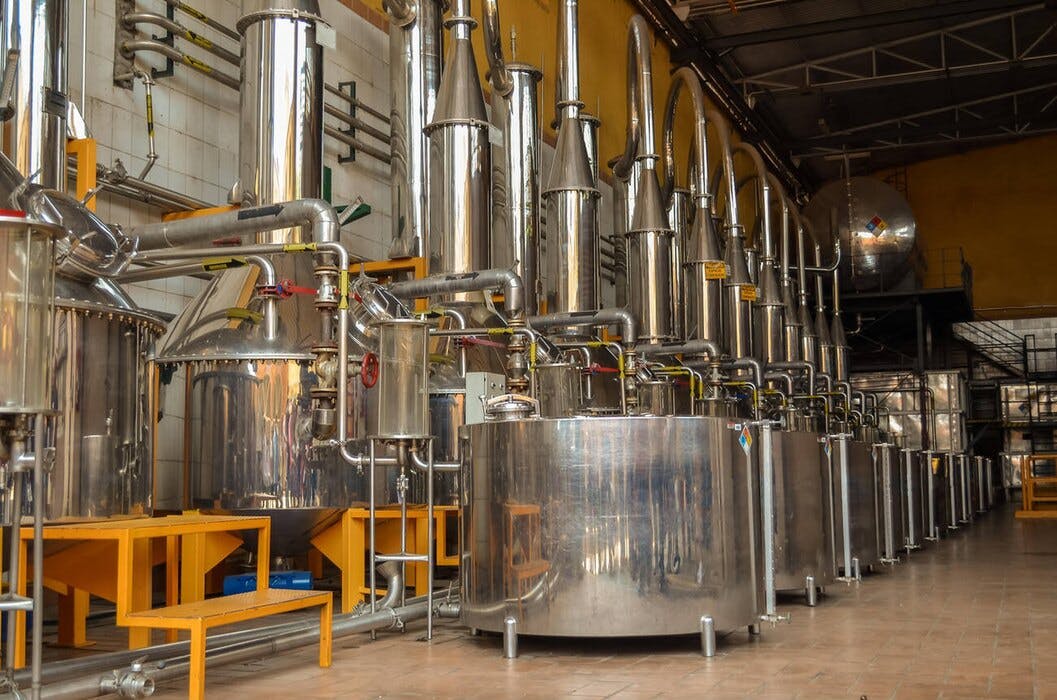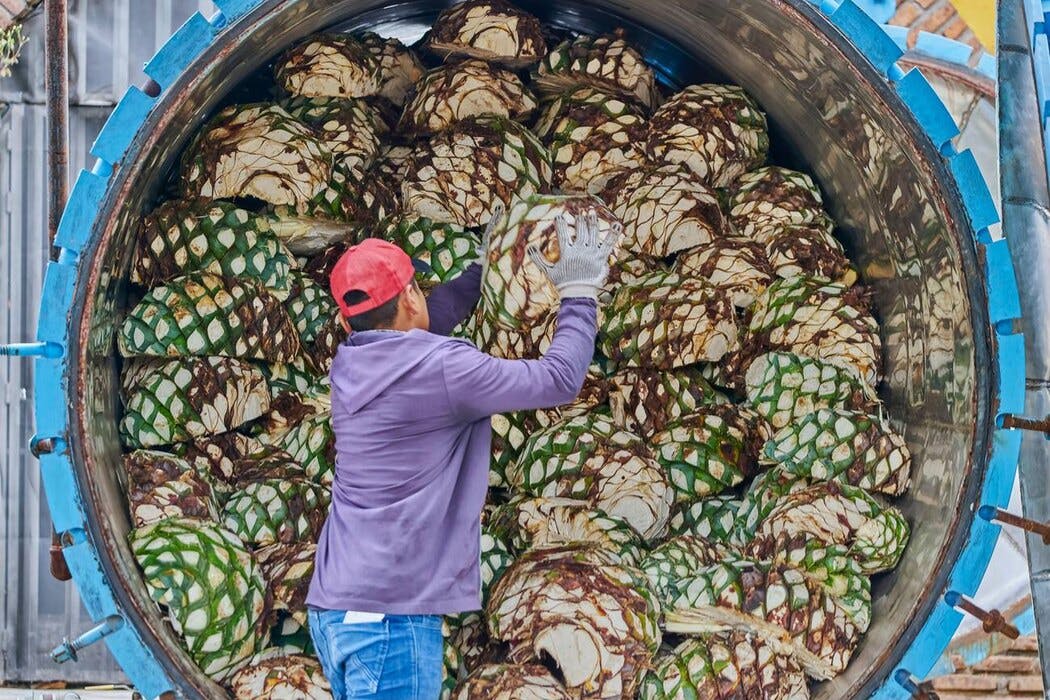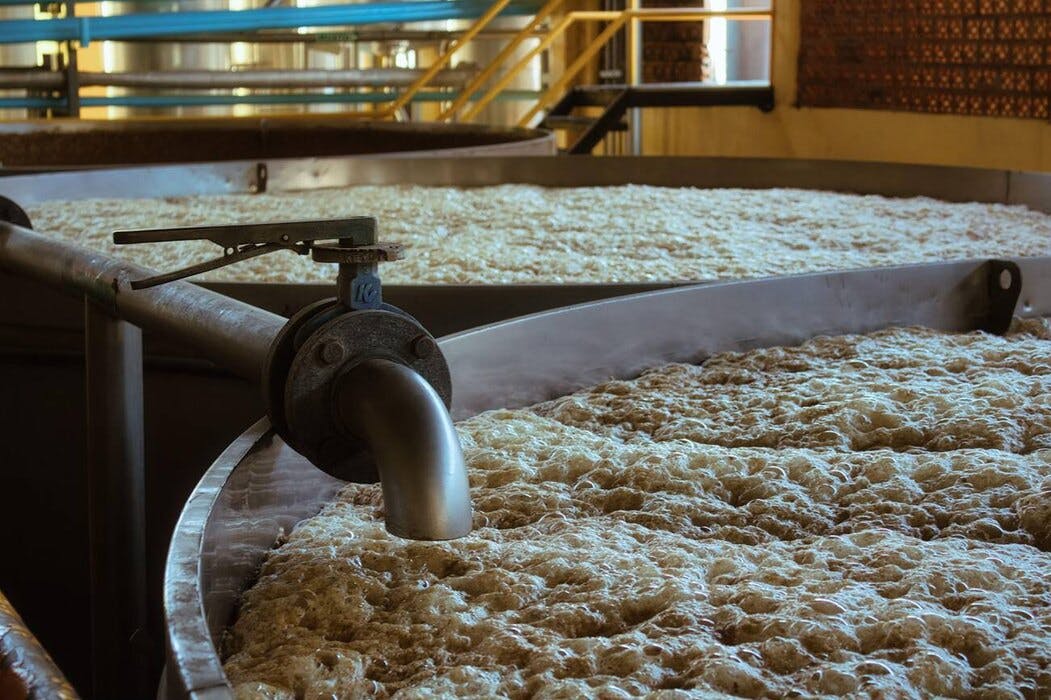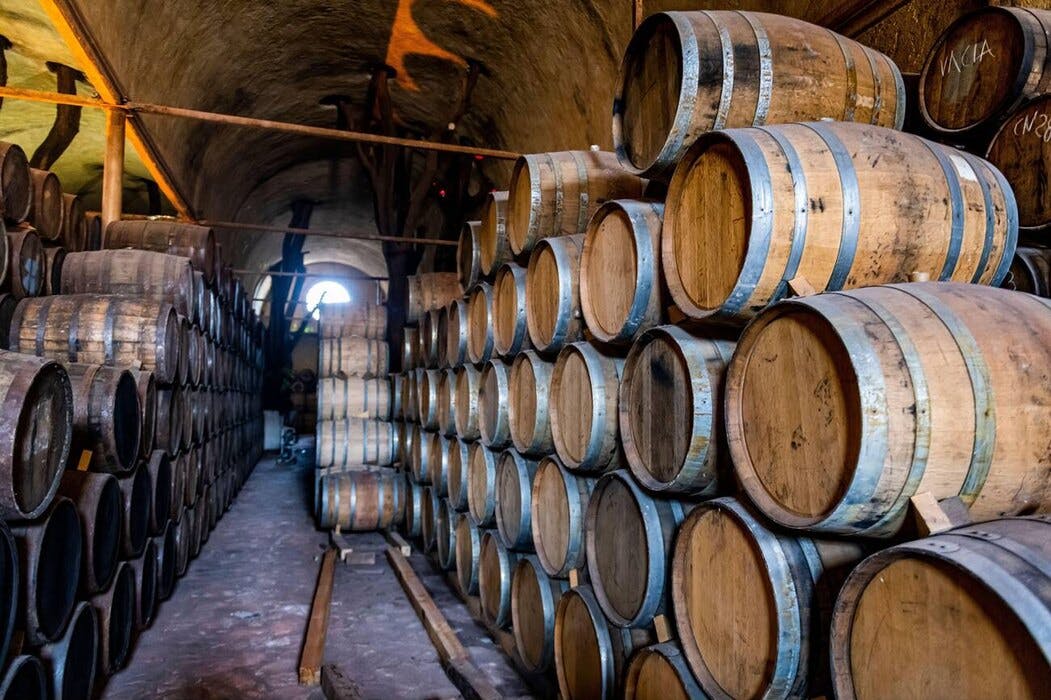
Tequila is much more than just a Mexican spirit it’s a protected designation that follows a strict set of regulations and a traditional know-how passed down from generation to generation. Production is concentrated in five states, with Jalisco being the most important. From the cultivation of blue agave to bottling, each step of the process shapes the character and aromatic profile of the final spirit. Let’s dive into the fascinating world of tequila production.
Blue agave: the essential raw material for tequila production
Tequila is made exclusively from the Agave tequilana Weber blue variety, a plant that grows in the state of Jalisco and a few surrounding regions in Mexico. Its cultivation is a crucial step, as a single 30 kg piña yields approximately 5 liters of alcohol.
The harvest is carried out by jimadores, skilled workers who cut away the long leaves to keep only the heart of the plant, known as the piña. This agave takes 6 to 10 years to reach maturity and accumulate enough non-fermentable sugars, known as inulin.
Converting piñas into agave juice
Once harvested, the piñas are transported to the distilleries and cut in half or quarters before being cooked. This cooking process converts inulin—a complex sugar found in agave—into fermentable sugars.
Cooking the Piñas
There are two main cooking methods:
- Traditional cooking: carried out in stone steam ovens (hornos) for 50 to 72 hours, this method allows for a richer aromatic development.
- Industrial cooking: done in pressurized autoclaves for 12 to 24 hours, it speeds up the process and results in a lighter profile.

Extracting the Juice (Agave Honey)
After cooking, the softened piñas are crushed to extract their juice, known as mosto. Several techniques are used:
- Tahona: a large volcanic stone wheel slowly crushes the fibers, giving the juice a more rustic character.
- Modern mechanical shredders: speed up extraction by efficiently separating the juice from the fibers.
Three to four rounds of water are typically used to extract all the sugars and obtain a concentrated juice ready for fermentation.
Fermentation and distillation in tequila production
The agave juice is transferred to fermentation tanks, made of either stainless steel or wood. Natural yeasts (rarely used in tequila) or selected yeast strains are added to convert sugars into alcohol.
Fermentation Time
- Industrial distilleries: 1 to 2 days.
- Traditional distilleries: up to 8 days, allowing for a more complex aromatic profile.
The resulting mash, a kind of “beer” with 4% to 7% alcohol, is then filtered before distillation.

Distillation
Two types of stills are used:
- Column stills: enable continuous distillation and yield a lighter profile.
- Copper pot stills: promote a more artisanal process with greater aromatic depth.
After the first distillation, the liquid, called ordinario, reaches 20–25% ABV. A second distillation refines the aromas and raises the alcohol level to 55–60%, before it is diluted down to 38–40% for bottling.

The ageing and bottling stage
After distillation, tequila may be aged in oak barrels or bottled directly.
Aging Containers
- Oak barrels: typically 180 to 200 liters, often former bourbon or French oak casks.
- 600-liter vats: rarely used, but legally permitted.
- Large vats of several thousand liters: used by some distilleries for bulk storage.
Each container is sealed by the Tequila Regulatory Council (CRT) to ensure aging traceability.
Tequila Classifications
Depending on its aging process, tequila falls into several categories:
Tequila Blanco (Silver)
- Unaged, or stored up to 60 days in stainless steel tanks or barrels.
- Offers the purest expression of agave.
Tequila Joven or Oro (Gold)
- A blend of blanco tequila with additives such as caramel or oak essence.
- Commonly used in cocktails.
Tequila Reposado (Aged)
- Aged between 2 months and 1 year in oak.
- Develops woody, vanilla, and spicy notes.
Tequila Añejo (Extra Aged)
- Aged 1 to 3 years in oak barrels.
- Richer and more complex, with caramel and spice aromas.
Tequila Extra Añejo (Ultra Aged)
- Aged over 3 years, this category was introduced in 2006.
- Offers a complexity comparable to old whisky or cognac.
The two main tequila families
In addition to aging classifications, tequila is divided into two main categories:
Tequila Mixtos
- Contains at least 51% sugars derived from agave.
- May include up to 49% other sugars (such as cane or corn).
- Permits the addition of colorings and flavorings.
100% Agave Tequila
- Made exclusively from sugars extracted from blue agave.
- Seen as a mark of quality, though it doesn’t always guarantee artisanal production.
- Must be bottled in Mexico.
Bottling and regulations
Before bottling, tequila is filtered and diluted to reach the desired alcohol level, usually 38–40% ABV. The Tequila Regulatory Council (CRT) enforces strict controls to ensure the origin and quality of every bottle.
TO DISCOVER TEQUILA FURTHER
La Maison du Whisky has three boutiques in Paris:
In each of these boutiques, you'll find a wide selection of whiskies, rums, sakes, and other fine spirits.
Follow our tasting calendar for upcoming events, or visit the Golden Promise Whisky Bar, which offers an extensive selection of whiskies and other spirits by the glass.